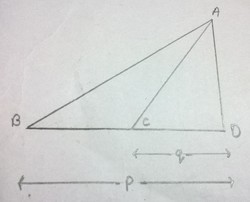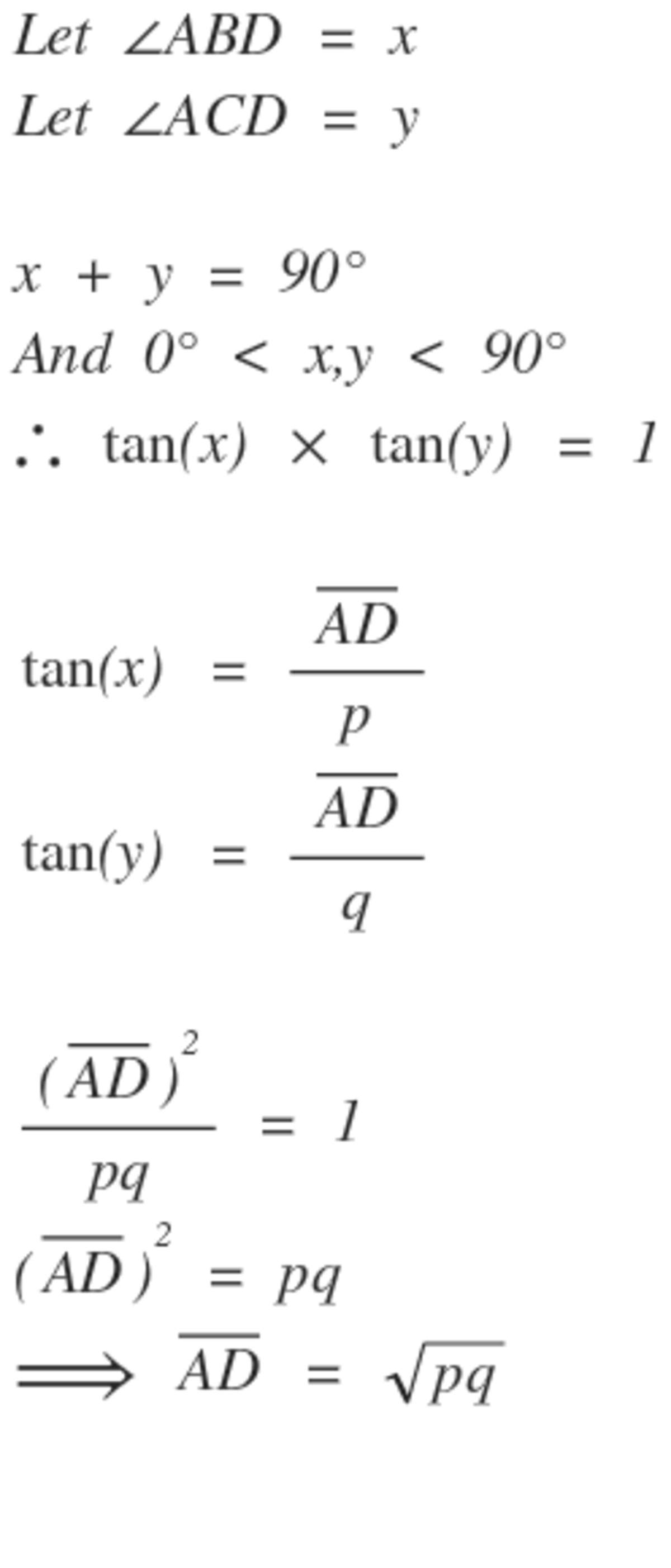This section requires Javascript.
You are seeing this because something didn't load right. We suggest you, (a) try
refreshing the page, (b) enabling javascript if it is disabled on your browser and,
finally, (c)
loading the
non-javascript version of this page
. We're sorry about the hassle.
2 solutions
I was too lazy to do all that math, so I decided instead to eliminate the answers that could not be correct, based on their units.
Since p and q are distances (lengths), I will consider them to be measured in meters. The answer we are looking for should also be a distance, so its unit should be meters.
B: q p The units (meters) cancel out, so this is a proportion (a ratio).
C: p q The units here are m 2 so this in an area.
D: q p The square-root of a proportion? I don't know what that is, but it's certainly not a distance!
So none of B, C or D can be the correct answer, because none of them produce a value with the unit meters.
A: p q The square-root of an area is a distance. So this is the only answer which can be valid!
If you had set one of the multiple-choice answers to also have the unit meters. (For example E: 2 p − q ) then I could not have used this technique, and would have been forced to work harder!
Log in to reply
Its a level 2 question....you don't need to work that hard...just use your Brian and I think that's what you have done


Let ∠ A B D = x a n d ∠ A C D = y
Now,
∠ A B D + ∠ A C D = 9 0 ∘
⇒ y = 9 0 − x
Now,
t a n x = p A D ....... (1)
t a n y = t a n ( 9 0 − x ) = c o t x = q A D ....... (2)
Multiplying (1) and (2),
1 = p q ( A D ) 2
⇒ A D = p q